- Author: Lee Miller
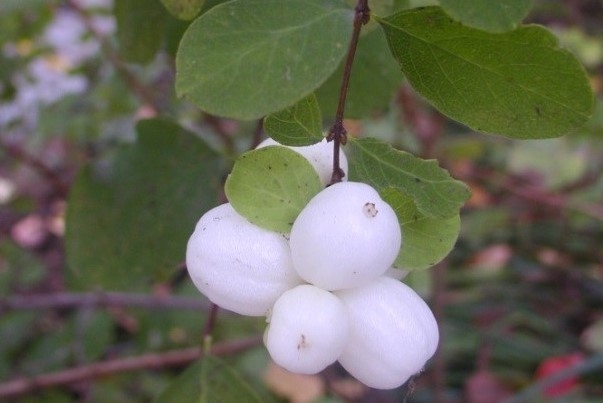
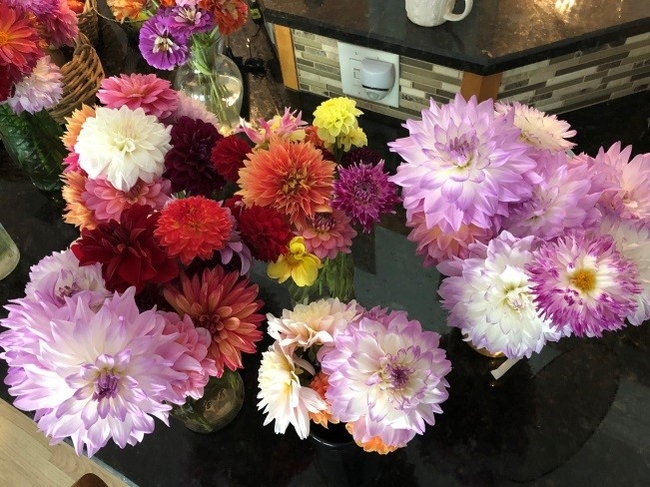
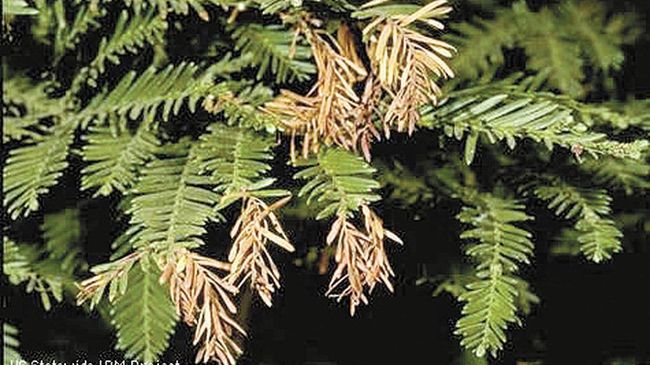
- Author: Jody and Morris Lacey
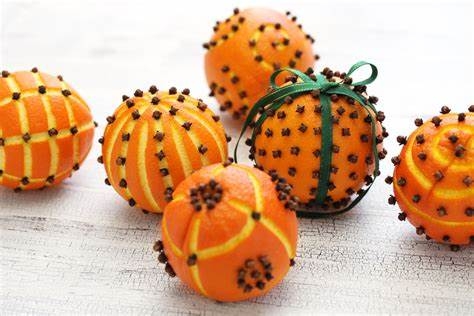
Did you know that the use of Pomanders date back thousands of years? Hippocrates, Thucydides, and Galen, all of whom lived through plagues due to pestiferous or “Bad Air” used a simple version to breathe easier and stay healthy. If breathing “corrupted air” was the cause of disease, then the solution was to surround oneself in a shield of pleasant fragrance. This could be as simple as an orange studded with cloves or an apple with resin bits stuck into the skin. You would simply carry the fruit with you and when you needed a breath of fresh air take it in your hand and roll it to activate the smell and hold it under your nose.
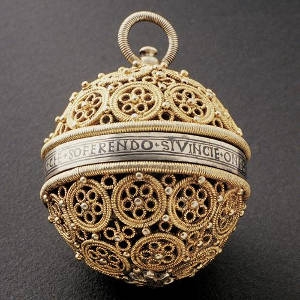
In 1348, a report from the Medical Faculty of the University of Paris states “The present epidemic or pest comes directly from air corrupted in its substance”. The recommended remedy by the writers was to use incense in combination with fragrances, which “hampers putrefaction of the air and removes the stench of the air and the corruption (caused by) the stench.” Nutmeg, aloeswood*, ginger, cloves, camphor, sandalwood, and cinnamon were faculty approved for use in pomanders. We know today face masks do a better job at filtering out the “pests” in air we breathe, but the smells of the spices and herbs would be an improvement! Take that COVID-19! A drop of cinnamon oil in your mask could be the secret to keeping the mask on while you shop or sit through a meeting.
* Agarwood, aloeswood, eaglewood or gharuwood is a fragrant dark resinous wood used in incense, perfume, and small carvings. It is formed in the heartwood of aquilaria trees when they become infected with a type of mold (Phialophora parasitica). Prior to infection, the heartwood is odorless, relatively light and pale colored; however, as the infection progresses, the tree produces a dark aromatic resin, called aloes (not to be confused with Aloe ferox, the succulent commonly known as the bitter aloe) or agar (not to be confused with the edible, algae-derived agar),in response to the attack, which results in a very dense, dark, resin-embedded heartwood. The resin-embedded wood is valued in Indian-North Eastern culture for its distinctive fragrance, and thus is used for incense and perfumes.
Ever wonder why Holly is the tree from which we decorate the halls with boughs? Let me shed light on this tree.
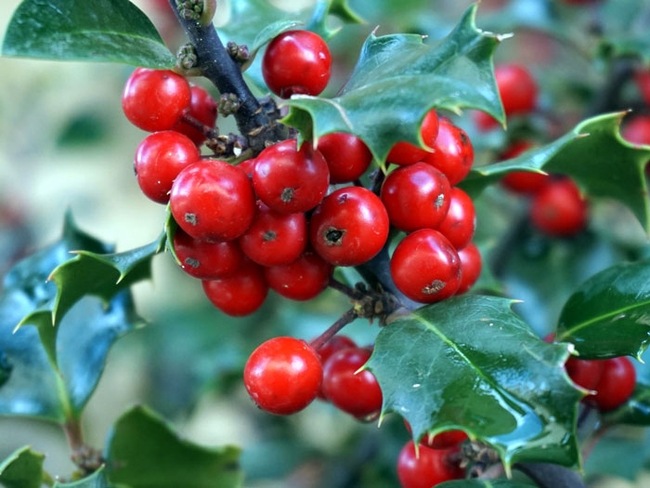
The Holly tree possessed protective qualities according to the Druids (early Celtic culture). They would bring boughs into their dwellings to protect against evil spirits and bad luck, as well as provide shelter from the cold for the fairies, who in turn would be kind to those who lived in the dwellings. (Is this an early start of “Elf on the shelf” or even the beginning of being classified as “naughty or nice”?) When you look at the Holly tree, its abundant spiked leaves are a great spot for garden birds to safely make their nests and enjoy the protection from predators.
Is it no wonder that Christmas and New Year celebrations take place during the Winter and days of Holly, aka Holly Days?
Happy Holly Days to All!
- Author: Lee Miller
Question: What are some winter garden chores that we can do in the shop?
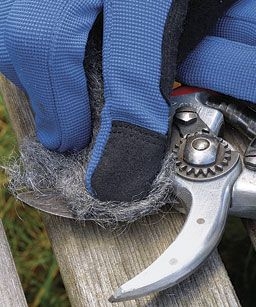
It is also a good time to visit our garden tools to make sure they are ready for spring use by conditioning and sharpening. I keep a can of boiled linseed oil available to rub down wooden handles on shovels, rakes, hoes, and wheelbarrows. If there are raised or splintered areas, they should be sanded with fine grit 120 sandpaper, either by hand or with an orbital sander, before applying the oil. This oil will help preserve your handles and make them last longer and they will feel better in your hands if smooth. Kitchen vegetable oil can be used on the metal tool surfaces to keep them shiny and prevent rust after cleaning with wire brush or steel wool.
Sharpening shovels and hoes can be done with a grinding tool or more slowly with a file. Pruners and loppers can be sharpened with several kinds of tools. If there are nicks or severely dull blades, a file can be used to take off the dulled parts. A finish to that and/or if a touch up sharpening is required it can be done with a stone or a carbide tool which can put a fine edge on a straight blade or knife. For more information on sharpening tools, click here.
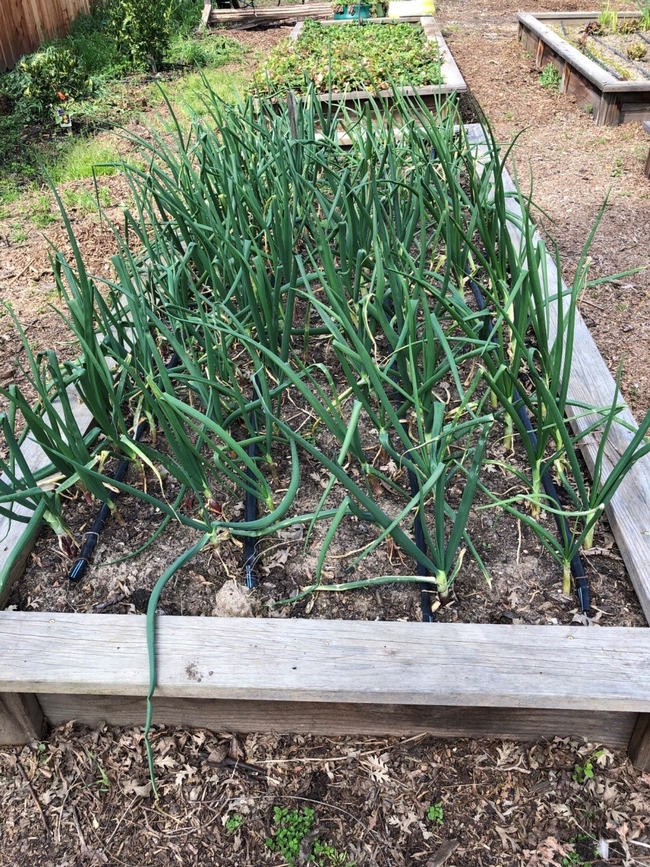
I made raised beds years ago using some free beams from an old barn that was torn down. This wood was not rot resistant and in a few years it rotted. Subsequently, I used cinder blocks to make raised beds that were rot proof. There are now plastic and metal beds available that are also rot-proof and maybe rustproof. However, if you like a more aesthetic look, you can use redwood or cedar and create raised beds that are longer lasting. At my home, there are six 4ft x 12ft cedar raised beds that are doing well, and are pleasant to work in, and they have irrigation lines established as well for easy irrigation.
- Author: Susan Mora Loyko
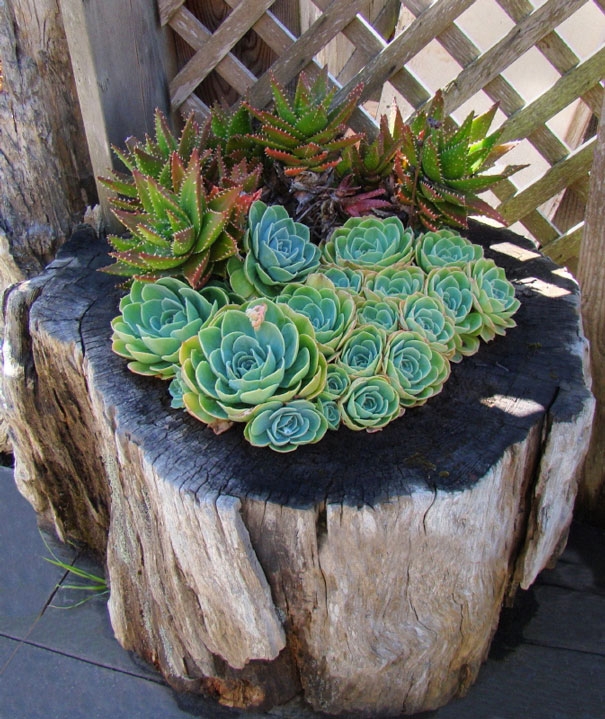
Before discussing artful ways to enhance that dead tree or stump in your yard or garden, a word of caution. A dead tree that is not a danger to people or a structure on your property can be left where it is. It's important to note, however, that limbs from dead trees may eventually fall onto your house, car, a person, or neighbor's house, so take that into consideration when deciding whether to keep or remove it. Any trees that may fall on your home (or a neighbor's home) should be removed. And never allow dead wood to rest against your home.
That being said, trees can go on “living” even after they are dead. As is, dead trees can still provide vital habitat for all kinds of species, according to the National Wildlife Federation. It may look like a dead tree to you, but birds, bugs, and other creatures will make it a home because it will offer protective cover and a place for raising offspring. Woodpeckers and songbirds may perch on dead trees, and overwintering butterflies will also take refuge in the crevices and cracks.
There is even a name for dead trees that are left upright to decompose naturally. They are known as snags.
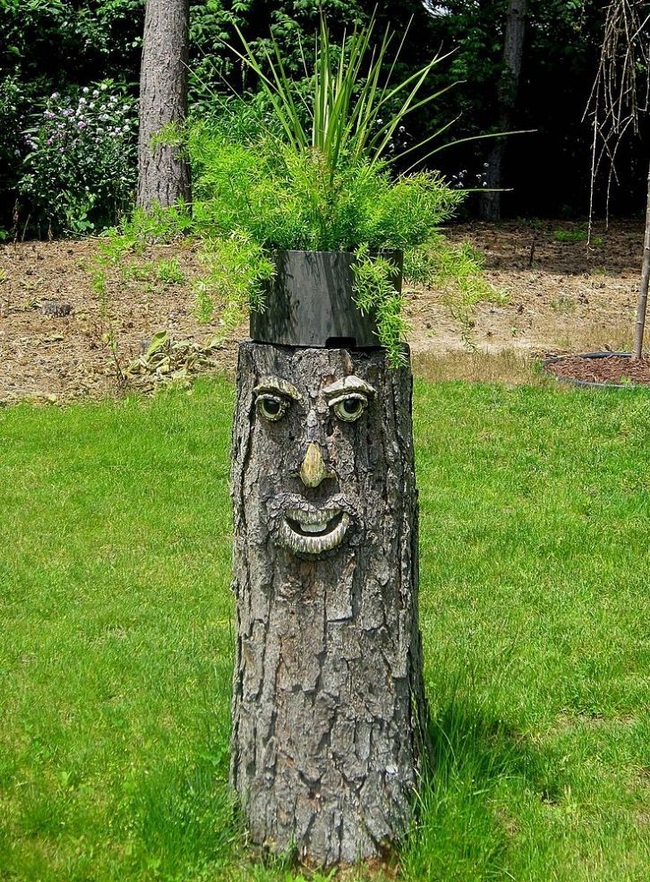
Tree trunks as planters: Plant right inside the rotted out stumps or hollow them out to hold pots that you can change throughout the season.
Decorate it: If it's safe to keep the tree where it is, turn it into yard art by painting the entire tree with one or many colors or hang colored lights or other decorations from it.
Feed the birds on a stump:A trunk cross-section can be used as a seed platform for ground-feeding birds like Mourning Doves. The platform prevents spilled seeds from germinating in your garden bed or lawn. Be sure to drill holes so rainwater can drain off.
Hanging bird feeder: Create a hanging feeder with a small branch. Put a nail through it and hang it from a branch. Drill three holes around the outside edge and attach short lengths of chain to hang it with. You can even nail apples or oranges on a branch for the fruit-loving birds to eat.
Birdbath: Hollow a shallow indentation into a stump or a big section of trunk with a hammer and chisel. Let it dry then seal with a layer of concrete. Allow it to cure before filling with water as a birdbath.
Pathways: Use cut sections of the trunk to create a garden pathway.
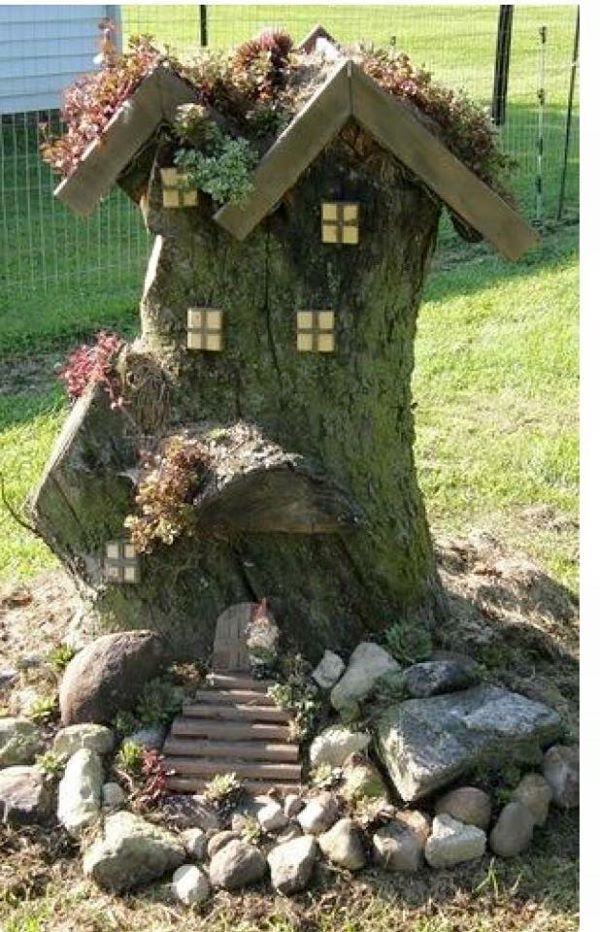
Make a funny face:Make a whimsical "face" with a cross section of trunk, adding small pieces of other trees or yard material as facial features.
Create art: Carve the stump or a large section of the trunk into a sculpture, releasing the “art” inside the wood.
Fairy Garden House: Turn your tree stump into a whimsical fairy garden house.
These are just a few suggestions. Just because a tree dies doesn't mean we have to discard it. Use your creativity and think of ways that you can give your tree a new life in your home and garden.
- Author: Sue Davis
January, February, and March
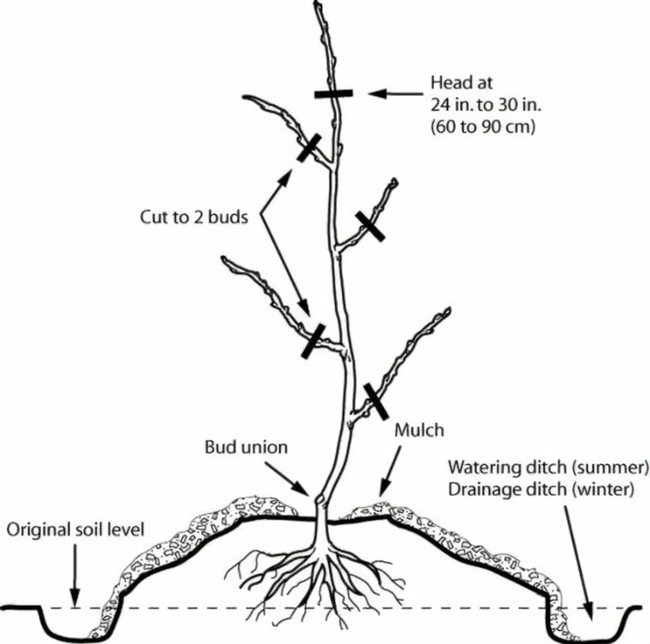
Just four chores per month, one per week, to consider this wintery season. Hopefully, there are enough pleasant winter days to get them accomplished.
January Ideas
ONE – Plant a bare root rose or fruit tree if there is room in the landscape. If not, pick up a few summer blooming bulbs (such as dahlias, gladiolus, lilies and begonias) and plant them in the ground where they will add color to the landscape or in a pot that can be moved at will.
TWO – Sharpen pruning tools, then dry them and rub them lightly with oil to prevent rust. Don't put them away wet and dirty, which can encourage the formation of rust.
THREE – Prune your roses with those sharp pruners. Vines, fruit and shade trees or grapes will benefit from a good pruning if there are no roses needing a pruning.
FOUR - Rake and discard fallen leaves (a compost pile will enjoy the addition) to prevent or reduce over-wintering pests.
In February:
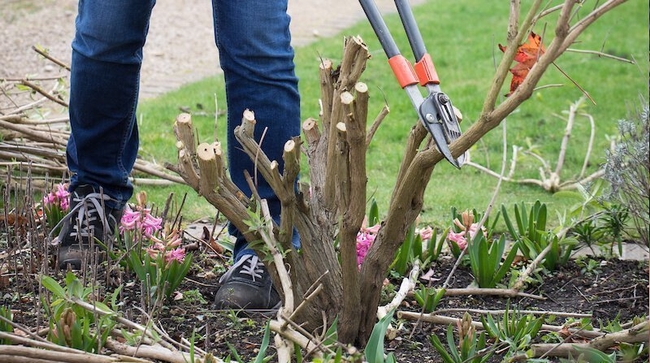
TWO – Spread some love. Give a small native California plant to a friend, a neighbor, a family member, or yourself. The plant will flourish in our climate and need far less water than other specimens once it reaches maturity
THREE – Start some seeds indoors. Pre-germinate pea seeds on moist paper towels in a warm room for a few days before sowing. See Lee Miller's Winter 2012 or Trish Tremayne's Winter 2015 articles on starting seeds for more information.
FOUR – Feed citrus trees with a nitrogen-rich fertilizer that contains additional nutrients such as Magnesium, Boron, Copper, and Zinc.
March Notes:
ONE – Plant some potatoes. Potatoes can carry soil-borne diseases which are harmless to humans but devastating for a potato plant. Buy seed potatoes from a nursery or a mail-order company that certifies the seed potatoes are disease free. Whole potatoes can be divided to give you a bigger crop by cutting the potatoes into chunks that each contain one or two eyes (the small depression where sprouts will form). To prevent rotting, store the freshly cut pieces at room temperature for three days before planting to allow the cut surfaces to dry and form a callus. Potatoes are heavy feeders, so planting with a good amount of compost will help the plant and your harvest. Potatoes can be heavy producers and harvesting them feels like a “treasure hunt.” This is a fun vegetable for children to plant and harvest.
TWO - Prune suckers (the branches that sprout directly from the root stock beneath the soil) from trees and shrubs.
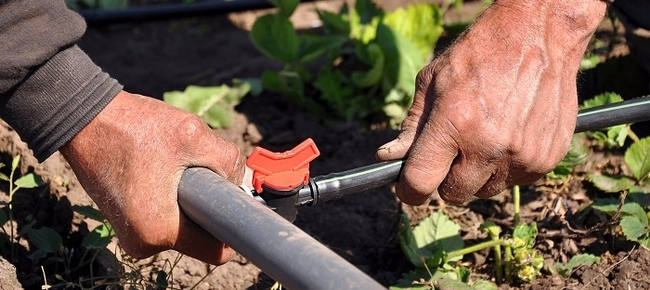
FOUR – March right into a local nursery to see (and maybe purchase) annuals, vegetables, and perennials that are available now to fill in those bare spots in the landscape.
Information gathered from:


